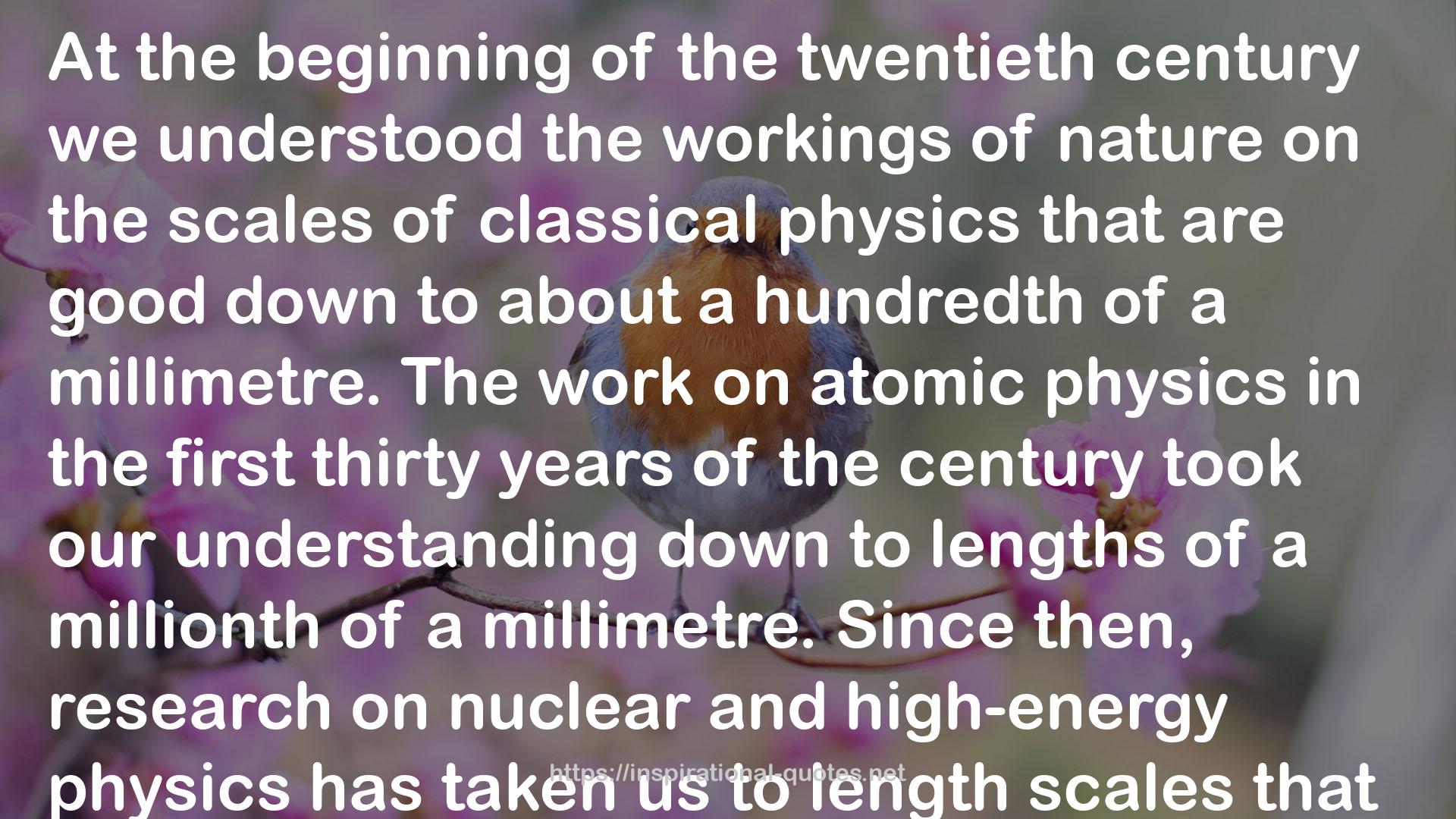" At the beginning of the twentieth century we understood the workings of nature on the scales of classical physics that are good down to about a hundredth of a millimetre. The work on atomic physics in the first thirty years of the century took our understanding down to lengths of a millionth of a millimetre. Since then, research on nuclear and high-energy physics has taken us to length scales that are smaller by a further factor of a billion. It might seem that we could go on forever discovering structures on smaller and smaller length scales. However, there is a limit to this series as with a series of nested Russian dolls. Eventually one gets down to a smallest doll, which can’t be taken apart any more. In physics the smallest doll is called the Planck length and is a millimetre divided by a 100,000 billion billion billion. We are not about to build particle accelerators that can probe to distances that small. "
― Stephen Hawking , Brief Answers to the Big Questions
